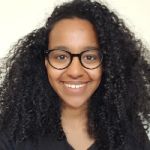Medicine is not always a using a stethoscope and learning anatomy. I think a lot of people have the perception that that is all we do for the entirety of the degree. For the summer term of my 2nd year, I am doing a CRI module which stands for Clinical Research and Innovation, in which students complete different research opportunities and we come together at the end to share our experiences at our individual placements.
I am fortunate to be at the Parkinson’s UK Brain Bank at Imperial’s campus next to Hammersmith Hospital. I still have a few days left here but I was excited to tell you about it. I have been slowly getting used to being in a lab environment. Buckets of brains line the shelves and tables in the first room we were allowed into. Seeing fume cupboards, distillation equipment, glassware for experiments and researchers walking around in white lab coats reminds me of my A Level Chemistry classes, the last time I was in a similar environment to this.
I have assisted in labelling cassettes and slide auditing and become familiar with how they are coded, retrieved tissue blocks from the storage freezers to fill requests and learnt how to select the better pieces of cerebellum to send off. I observed dissection of donor brains and reviewed neuroanatomy. I learnt about Parkinson’s brain pathologies and how to identify them on a microscopic scale. Working with my peers, we also wrote a clinical summary for the pathologist that would be conducting a dissection for that donor brain.
The researchers were kind enough to walk us through how the brain blocks are processed after the macroscopic dissection. We learnt about the fixatives used like formalin and the machines used to infuse the samples with ethanol and paraffin. I didn’t know that here the slides are produced manually. Each brain block is painstakingly encased in wax and cut into miniscule slices by hand, and they are then set onto a slide with a cover slip. They are immersed in xylene and put in an oven. Various staining methods can then be applied, the most common being haematoxylin and eosin stain, shortened to H + E stain, that turns everything a vivid pink colour.
I have really enjoyed learning about so much on this placement and there is still a little left to go. Tomorrow is more microscopy for the Parkinson’s case we are following and me and my teammates are going to do a little more research into Parkinson’s staging before starting on putting together the poster for the final assignment.
I think some people think that Medicine as a degree is only focussed on producing doctors but there are also some opportunities to explore things that you are more drawn towards like neuroscience for me. Neuroscience was another course I was considering applying to before I decided on Medicine, and I really enjoyed exploring it to more depth in the context of my medical degree. This also makes me excited to explore more pathways into research in other specialities in the future.
Have you explored research into something different from your favourite subjects?



